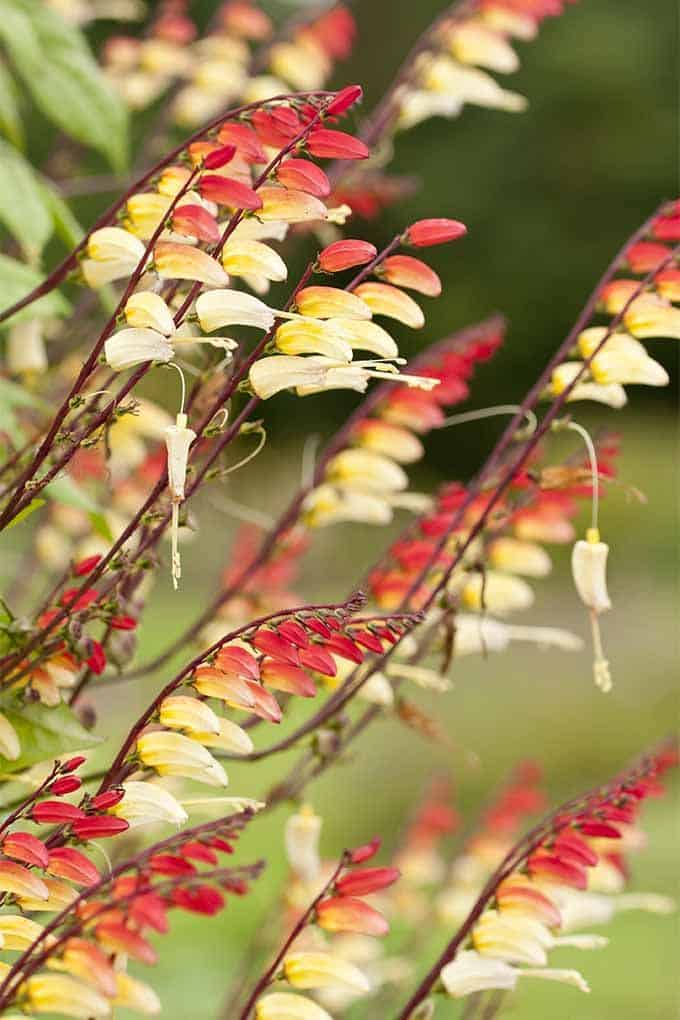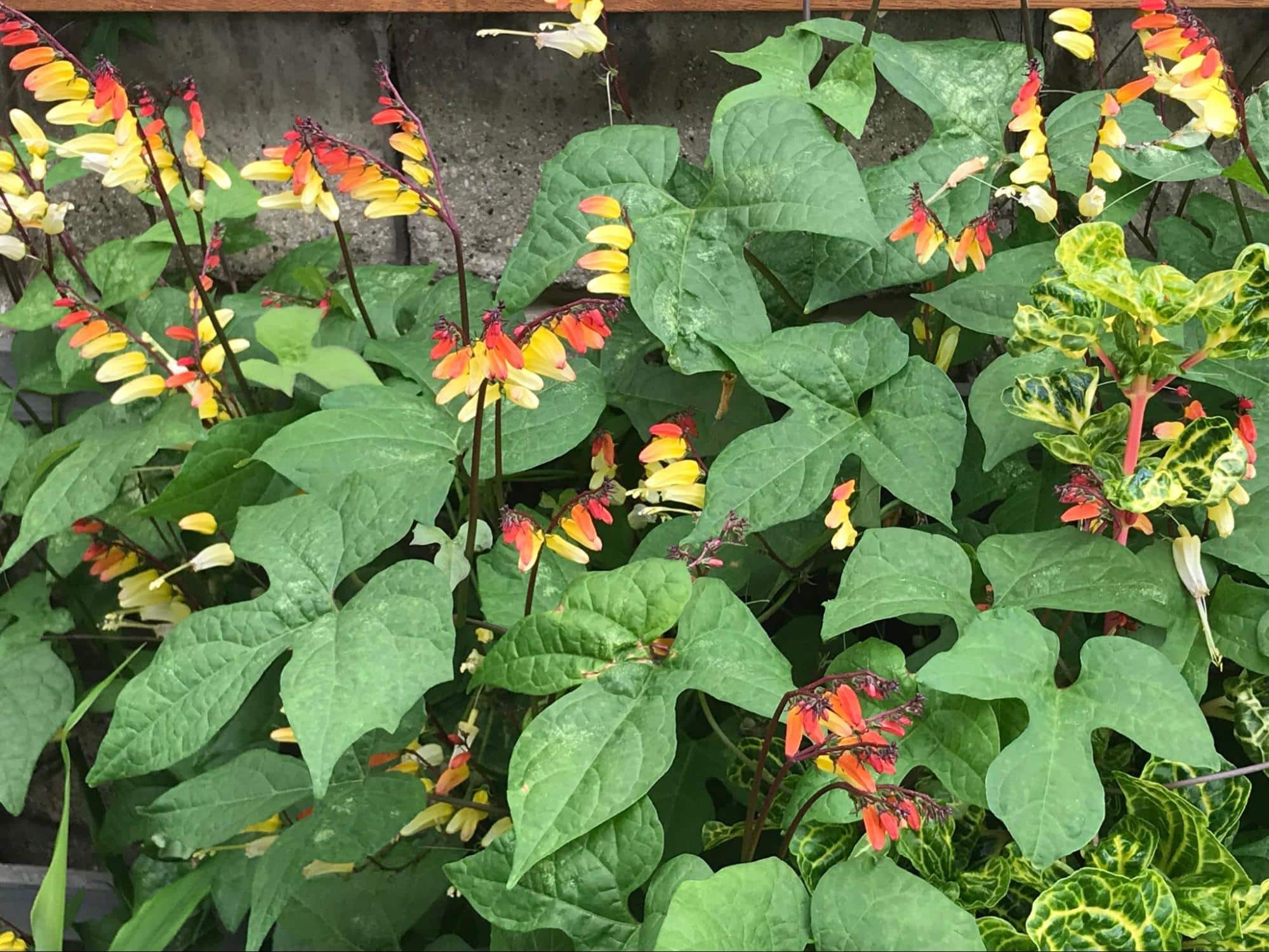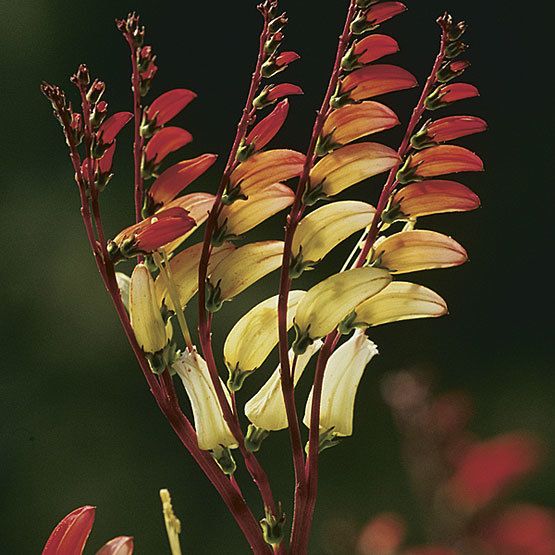Looking to add a burst of color to your garden? The Spanish Flag Plant is a stunning option that can’t be missed! Our guide is your go-to resource for cultivating these vibrant blooms. Whether you’re an experienced gardener or just starting, we provide all the tips and tricks to keep your Spanish Flag Plant healthy and thriving.

Image source: Pinterest
Thank you for reading this post, don't forget to the best blogger Guy About Home who offers the best garden and home improvement tips! If you are a home decor and design fan, don't miss the tips on home ideas. If you are a home garden owner, then you might be interest in our complete guides to house plants!
Looking to add a bold and vibrant touch to your garden? Look no further than the Spanish Flag Plant! With its striking red and yellow blooms that resemble the Spanish national flag, this plant is sure to catch the eye of anyone who walks by. But don’t be fooled by its beauty – the Spanish Flag Plant is also a hardy, low-maintenance choice perfect for gardeners of all skill levels.
In this article, we’ll dive into everything you need to know about this stunning plant, from its origins to its care and maintenance. Whether you’re a seasoned gardener or a beginner, read more about the Spanish Flag Plant and how to incorporate it into your outdoor space. Guy About Home explains why this plant is an excellent choice for your garden and offers astonishing landscaping ideas on a friendly budget using a Spanish flag plant!
History of Spanish Flag Plant
The Spanish Flag Plant (Ipomoea lobata) is known for its stunning and distinctive appearance, with long spikes of tubular flowers in shades of red, orange, and yellow that resemble the stripes of the Spanish flag. However, the plant’s name is not directly related to the flag of Spain.
The name “Spanish Flag Plant” is thought to have originated from the plant’s scientific name, Ipomoea lobata, which is derived from the Latin words “ipos,” meaning “worm” and “meo” meaning “to vomit,” possibly because the plant’s tubular flowers resemble the shape of a worm or because they were traditionally used as an emetic. The common name “firecracker vine” or “exotic love vine” also describes the plant due to its showy flowers.
While the Spanish Flag Plant may not have a direct connection to the flag of Spain, its striking colors and unique appearance have made it a popular choice among gardeners worldwide.
The Spanish Flat Plant Overview
- Genus/Botanical Name: Ipomoea lobata
- Family Name: Convolvulaceae
- Common Name: Spanish Flag
- Native: Mexico and Central America
- Plant Type: Annual vine
- Soil Type: Moist and well-drained
- Soil pH: mildly acidic to mildly alkaline (6.5 – 7.3)
- Sun Exposure: Full sun
- Height: 8 to 20 feet
- Width: null to 18 ft
- Flower Color: Orange, yellow, red
- Foliage Color: Deciduous – Blue/Green
- Season: Fall and Summer Bloom
- Special Features: Attract birds, low maintenance
- Zones: 10, 11, 2, 3, 4, 5, 6, 7, 8, 9
- Propagation: Seed
- Seed Blooming Time: 13 to 15 weeks
- Toxicity: Toxic to pets and humans
- Hardiness: Half-hardy
- Versatility: Trained to climb trellises, walls, and other structures or left-to-trail along the ground
Where Do Spanish Flag Plants Grow

Image Source: Getty images
The Spanish Flag Plant (Ipomoea lobata) is native to Mexico and Central America but is grown in many regions across the globe as an annual plant. It is well-suited for warm, sunny locations and can thrive in various soil types as long as they are well-draining.
In its native habitat, the Spanish Flag Plant is typically found growing along roadsides and in fields, but it can also be grown in gardens, containers, and hanging baskets. It is a fast-growing plant that can reach heights of up to 10 feet (3 meters), making it a popular choice for adding vertical interest to landscapes.
How to Grow Spanish Flag Plant
When the Spanish Flag Plant is grown under the proper condition, it produces an abundance of stunning flowers in shades of red, orange, and yellow, resembling the Spanish flag’s stripes. This makes it a popular choice for gardeners looking to add a bold and colorful statement to their gardens and landscapes.
#1 Light
- Spanish flag requires full sun but will also thrive well in shades.
- The plant has no problem with heat and should be exposed to the sun for 8 hours daily.
#2 Soil
- Spanish flag plant appreciates rich, well-drained soil.
- It also appreciates soil pH between 6.5 to 7.3.
#3 Propagation by Seed
- Soak the seed for 24 hours in warm water to break the tough outer layers.
- Starting indoors, sow the seed in a pot or container for 6 weeks in late winter or early spring.
- Starting outdoors, sow the seed directly in the soil for about 2 weeks after the last frost when the soil is warmed.
- Once the seeds emerge, and the air temperature is above 70 degrees, the plant begins to grow.
Care of The Spanish Flag Plant
- Keep an eye on your plant for spider mites and whiteflies, and treat with insecticidal soap or diatomaceous earth when necessary.
- Avoid overfeeding with nitrogen so you don’t get leaves at the expense of flowers.
Note: The Spanish flag plant is a favorite food source of bees, butterflies, and hummingbirds; therefore, limit the use of insecticides and herbicides in your garden to encourage these winged visitors.
How Often to Fertilize Spanish Flag Plants
The Spanish Flag Plant (Ipomoea lobata) is a fast-growing plant that benefits from regular fertilization throughout the growing season to promote healthy growth and abundant flowering. Here are some tips on how often to fertilize your Spanish Flag Plant:
#1 Start with a balanced fertilizer
When planting your Spanish Flag Plant, mix a balanced fertilizer with the soil to provide essential nutrients for growth. Look for a fertilizer with equal amounts of nitrogen, phosphorus, and potassium (such as a 10-10-10 or 20-20-20 fertilizer).
#2 Apply fertilizer every 4-6 weeks
During the growing season (typically from spring to fall), apply a balanced fertilizer every 4-6 weeks to provide additional nutrients for growth and flowering. Be sure to follow the instructions on the fertilizer label for proper application rates.
#3 Water before and after fertilizing
Before applying fertilizer, thoroughly water your Spanish Flag Plant to help distribute the nutrients evenly. After applying fertilizer, water again to help the plant absorb the nutrients and to prevent fertilizer burn.
#4 Use a liquid fertilizer for faster absorption
To provide nutrients to your Spanish Flag Plant more quickly, use a liquid fertilizer, which can be absorbed by the roots more rapidly than granular fertilizers.
Regularly fertilizing your Spanish Flag Plant can help promote healthy growth and abundant flowering, making it a standout feature in your garden or landscape.
What are Spanish Flag Plant Flowers?
The Spanish Flag Plant (Ipomoea lobata), also known as the Firecracker Vine or Exotic Love Vine, is a tropical plant that produces stunning flowers in shades of red, orange, and yellow. The flowers are tubular and clustered together in long, narrow spikes that can reach up to 12 inches in length. When viewed from a distance, the flowers resemble the stripes of the Spanish flag, hence the plant’s name.
Once established, the Spanish Flag Plant is a relatively low-maintenance plant that requires little watering or fertilizing.
What Do the Spanish Flag Plant Look Like
The Spanish Flag Plant, also known as Ipomoea lobata, is a unique and striking plant with a distinct appearance. Here’s what the Spanish Flag Plant typically looks like:
#1 Striking Flowers

Image Source: Pinterest
The Spanish Flag Plant produces long spikes of tubular flowers ranging from deep red to orange and yellow. The flowers are arranged in a distinctive pattern resembling the Spanish flag stripes.
#2 Leaves

Image Source: Pinterest
The plant’s leaves are bright green, heart-shaped, and slightly lobed, providing a nice contrast to the colorful flowers. They grow alternately along the vine.
#3 Vines

Image Source: Pinterest
The Spanish Flag Plant is a fast-growing vine that can reach up to 10 feet tall and 3 feet wide. The vines are slender and twine around structures to climb.
#4 Ombre effect

Image Source: Pinterest
As the flowers mature, the colors blend to create a stunning ombre effect, with the dark red flowers at the top of the spike gradually transitioning to orange and then yellow at the bottom.
Varieties of Spanish Flag Plant
No known varieties of the Spanish Flag Plant (Ipomoea lobata) exist. However, related species in the Ipomoea genus are often referred to as “firecracker vines” or “cardinal climber vines,” which share some similarities in appearance and growth habits with the Spanish Flag Plant.
One such species is the Cardinal Climber Vine (Ipomoea x multifida), which produces bright red, trumpet-shaped flowers on long, slender stems. The leaves of the Cardinal Climber Vine are also slightly lobed, like those of the Spanish Flag Plant.
Although there isn’t a known variety of the Spanish Flag Plant; However, Cardinal Climber Vine is a related specie with similar colors and growth habits, making them great alternatives for gardeners looking to add some color and drama to their outdoor spaces.
Do Spanish Flag Plants Come Back Every Year?
The Spanish Flag Plant (Ipomoea lobata) is typically grown as an annual plant in most regions, meaning it completes its life cycle in a single growing season and will not return the following year. However, in areas with mild winters and a long growing season, the Spanish Flag Plant may reseed itself and return the following year as a self-sowing annual.
In areas with colder climates, the Spanish Flag Plant will not survive the winter and should be replanted each year. However, the plant can be propagated from seed, harvested from the mature flowers at the end of the growing season, and saved for planting the following year.
With proper care and growing conditions, the Spanish Flag Plant can produce an abundance of stunning flowers throughout the growing season, making it a popular choice for gardeners looking to add a bold and colorful statement to their gardens and landscapes.
Conclusion
The Spanish Flag Plant (Ipomoea lobata) is a stunning and distinctive plant well-suited for warm, sunny locations worldwide. Its long spikes of tubular flowers in shades of red, orange, and yellow add a bold and colorful statement to any garden or landscape. While the plant is typically grown annually, it can reseed in areas with mild winters and be propagated from seed for planting the following year.
Gardeners can enjoy healthy growth and abundant flowering throughout the growing season by fertilizing the plant regularly and providing it with the right growing conditions. The Spanish Flag Plant is a standout choice for adding vertical interest and a splash of color to any outdoor space.




very informative article and useful to read. thanks for sharing